1.3 Social Customs and Rites of Passage
7 min read•january 13, 2023
Katelyn Lien
AP Japanese 🇯🇵
28 resourcesSee Units
Social Customs
🧎🏻 Ojigi (お辞儀)
お辞儀, or bowing, is a traditional gesture of respect and politeness in Japan and other East Asian cultures. It is believed to have originated in ancient China, where it was a gesture of submission to a superior, and it was subsequently adopted in Japan and other East Asian countries. In Japan, bowing is used as a way of showing respect or appreciation to others, and it is an important part of the country's social etiquette. Bowing is usually accompanied by the use of polite and formal language, e.g. お早うございます (ohayou gozaimasu | good morning), 始めまして (hajimemashite | nice to meet you), and it is an important way of expressing goodwill and maintaining harmonious relationships in Japanese society.
Level of Bows
The angle at which one bows will depend on the context of who one is bowing to and for what purpose. There are three types:
- Eshaku (会釈) is a quick, casual bow that is performed at about a 15-degree angle. This type of bow is used in casual or informal settings, such as when greeting a friend or a colleague.
- Keirei (敬礼) is a deeper bow that is performed at about a 30-degree angle. This type of bow is used in more formal settings, such as when meeting someone for the first time or when expressing gratitude or appreciation to someone.
- Saikeirei (最敬礼) is a very deep bow that is performed at a 45-degree angle or more. This type of bow is reserved for very formal or ceremonial occasions, such as when meeting a dignitary or during a traditional tea ceremony.
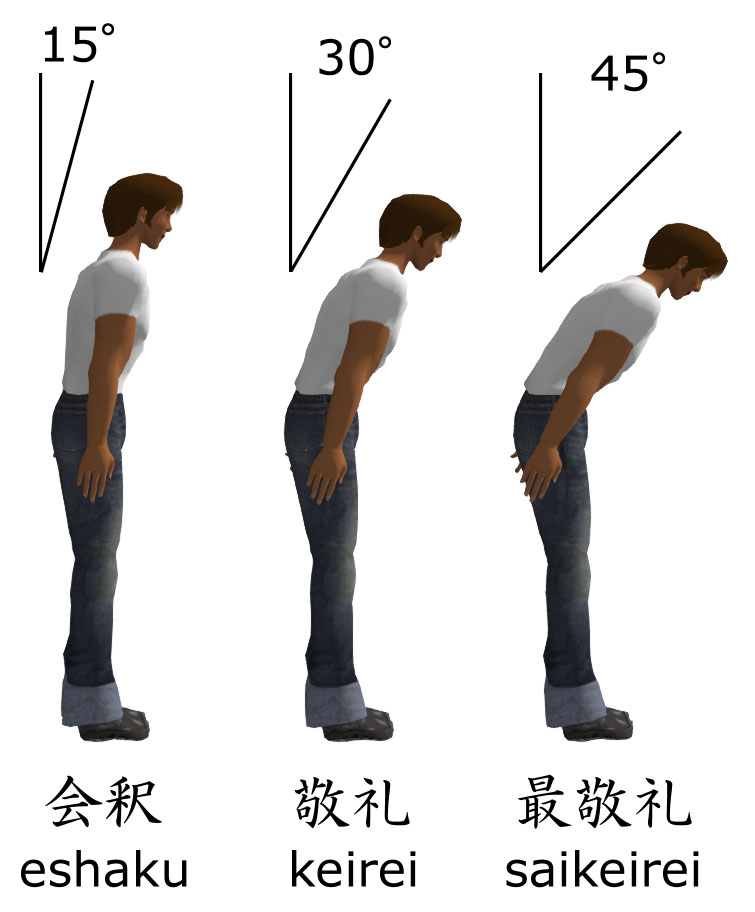
Image Courtesy of Wikimedia
It is important to note that the depth and duration of the bow is generally proportional to the level of respect or politeness being expressed.
🚫👞 Removing Shoes
The practice of removing shoes before entering a home or other building is common in many cultures around the world, including Japan. It is considered polite to remove shoes before entering someone's home, as it is a way of showing respect for the owner's space and keeping the interior clean.
The custom of removing shoes is thought to have originated in ancient times when people lived in houses with floors made of tatami (畳) matting, which is a traditional floor covering made from straw or rush. Tatami mats are delicate and prone to damage, so it was necessary to remove shoes to protect them. In addition, removing shoes helped to keep the interior of the house clean, as people would often walk through dirt and mud outside.
Over time, the custom of removing shoes before entering a home or other building became a common practice in Japan, and it is still widely observed today. In addition to homes, it is also common to remove shoes before entering temples, shrines, and other sacred spaces.
In some places where shoes are removed, uwabaki (上履き), or slippers, may be provided to wear inside. It is important to wear the correct slippers in the correct place, as different slippers may be provided for different areas, e.g. indoor bathrooms will have special slippers used that space only.
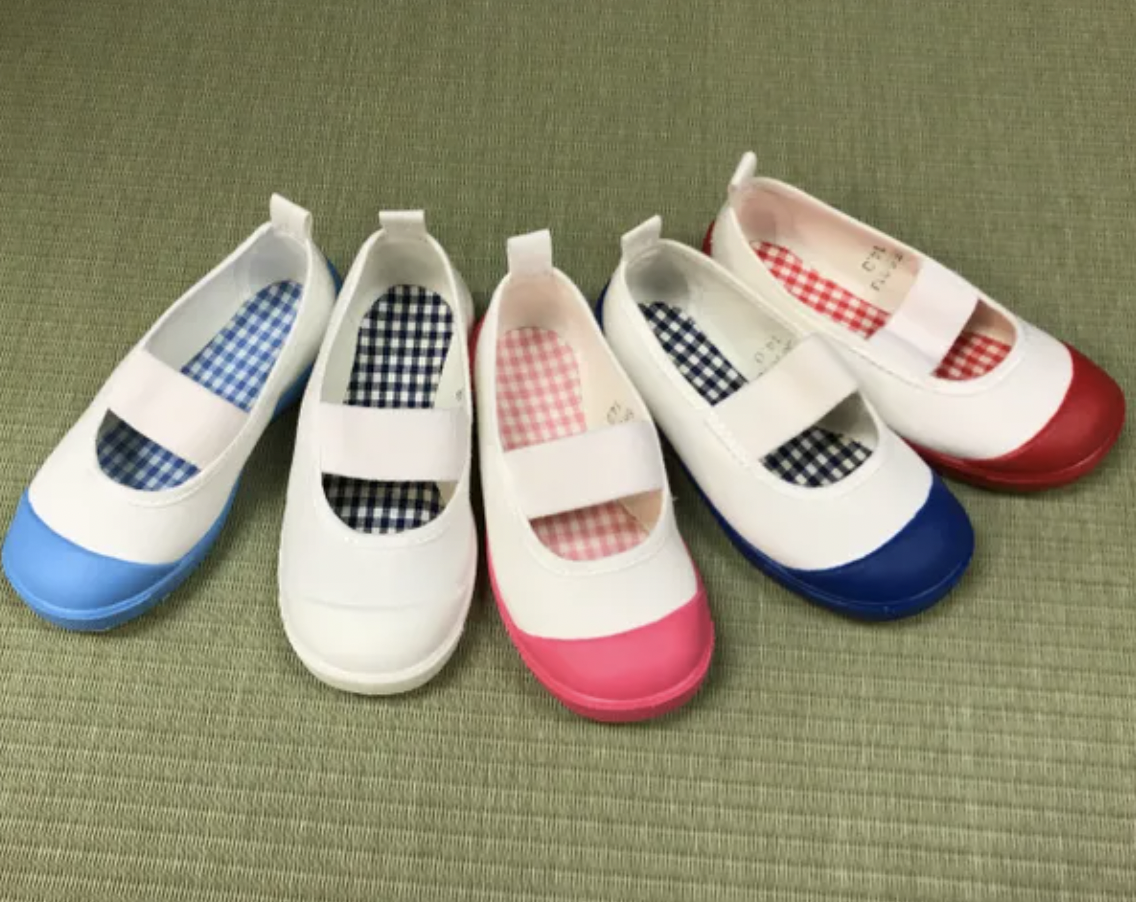
Courtesy of Little Japan USA
🎁 Gift-Giving
Gift-giving is an important part of Japanese culture, and it is a common practice in many social and business situations. It is seen as a way of strengthening relationships and building trust, and it is an important part of the country's social etiquette.
There are many different occasions when gift-giving is appropriate, such as during the New Year, at weddings and other celebrations, and when visiting someone's home. In business, it is common to give gifts to clients, customers, and business partners as a way of expressing appreciation and building relationships.
Gift-giving is governed by a set of rules and customs, and there are certain things to consider when giving gifts. For example, it is considered polite to wrap gifts in plain, neutral-colored paper, and to avoid using red or white wrapping paper, which are associated with funerals and weddings, respectively. It is also important to consider the recipient's preferences and to give a gift that is appropriate for the occasion.
Rites of Passage
A Japanese person's life is marked with many significant events. These events celebrate the growth of the individual and involve many family members and friends who all express well-wishes for the future.
🎉 Shichi-go-san (七五三)
七五三 is a holiday celebrated by families with children who are three, five, or seven years old. It is typically held on November 15th, although some families may celebrate on different days.
The holiday has its origins in ancient Shinto rituals that were intended to protect and pray for the health and growth of young children. In the past, it was also a time for children to be formally introduced to society and to start learning about social etiquette.
The numbers, shichi, go, and san, are seven, five, and three respectively, and they represent the ages of the children who are involved in the celebration. Girls celebrate shichi-go-san when they are three and seven years old while boys celebrate it once when they are five years old. (Some families celebrate when their son is three years old as well but it is not very common)
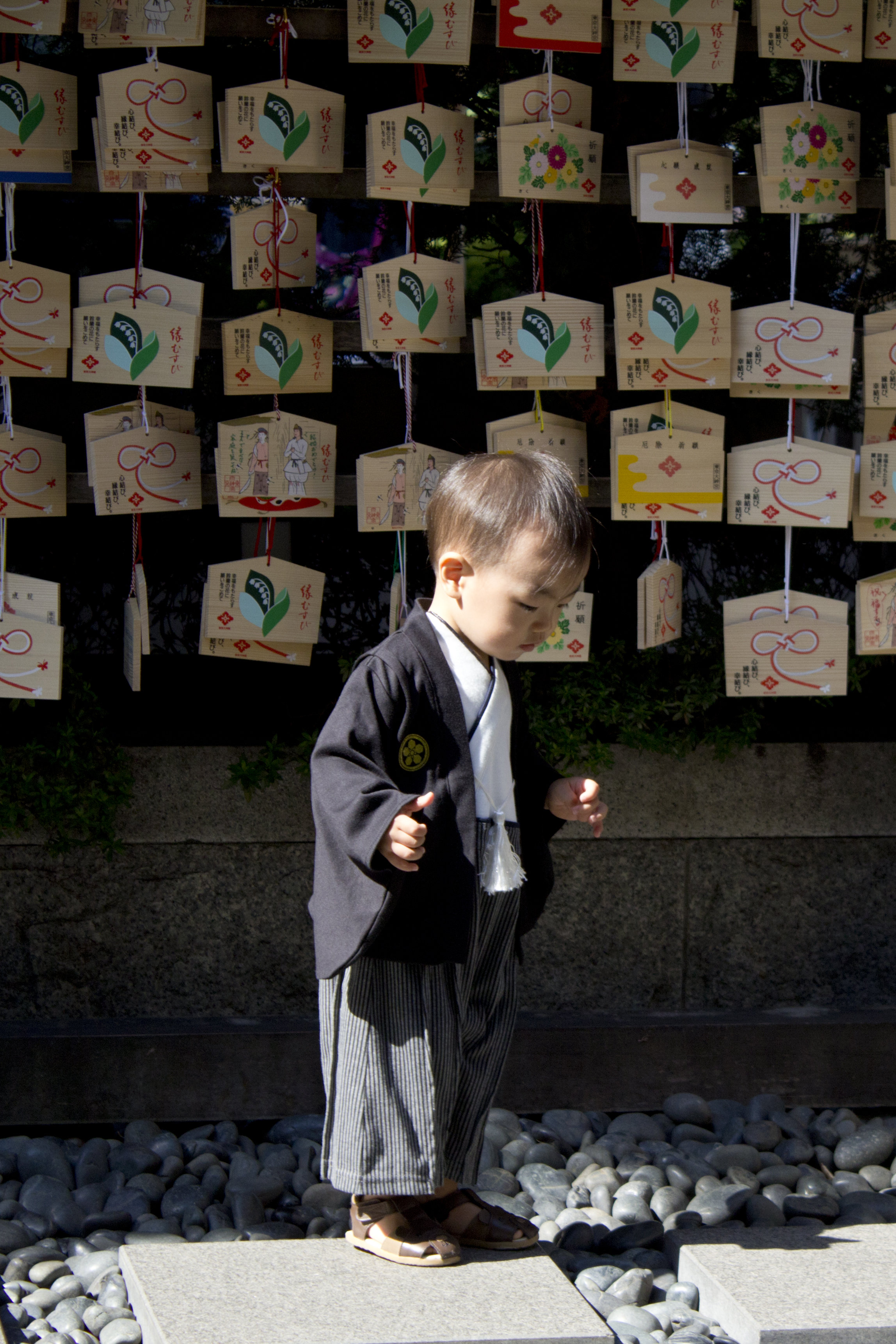
Image Courtesy of Wikimedia
Children wear kimono (着物), traditional Japanese clothing, often for the first time in their life, for this special occasion. They also wear zōri (ぞうり) with their kimono, which are flat sandals made of straw and rubber. These elegant pieces of clothing represent the children's increased responsibility and the first step toward adulthood. Once the children are dressed, families visit their local shrine or jinja (神社). There, they pray for their children's well-being and healthy growth.
Perhaps every child's favorite part of this celebration is the chitose-ame (ちとせあめ). It is a long red and white-colored candy, and each child gets one of each color. Red and white are celebratory Japanese colors. Chitose means a thousand years, and therefore the sticks of candy signify a long life.
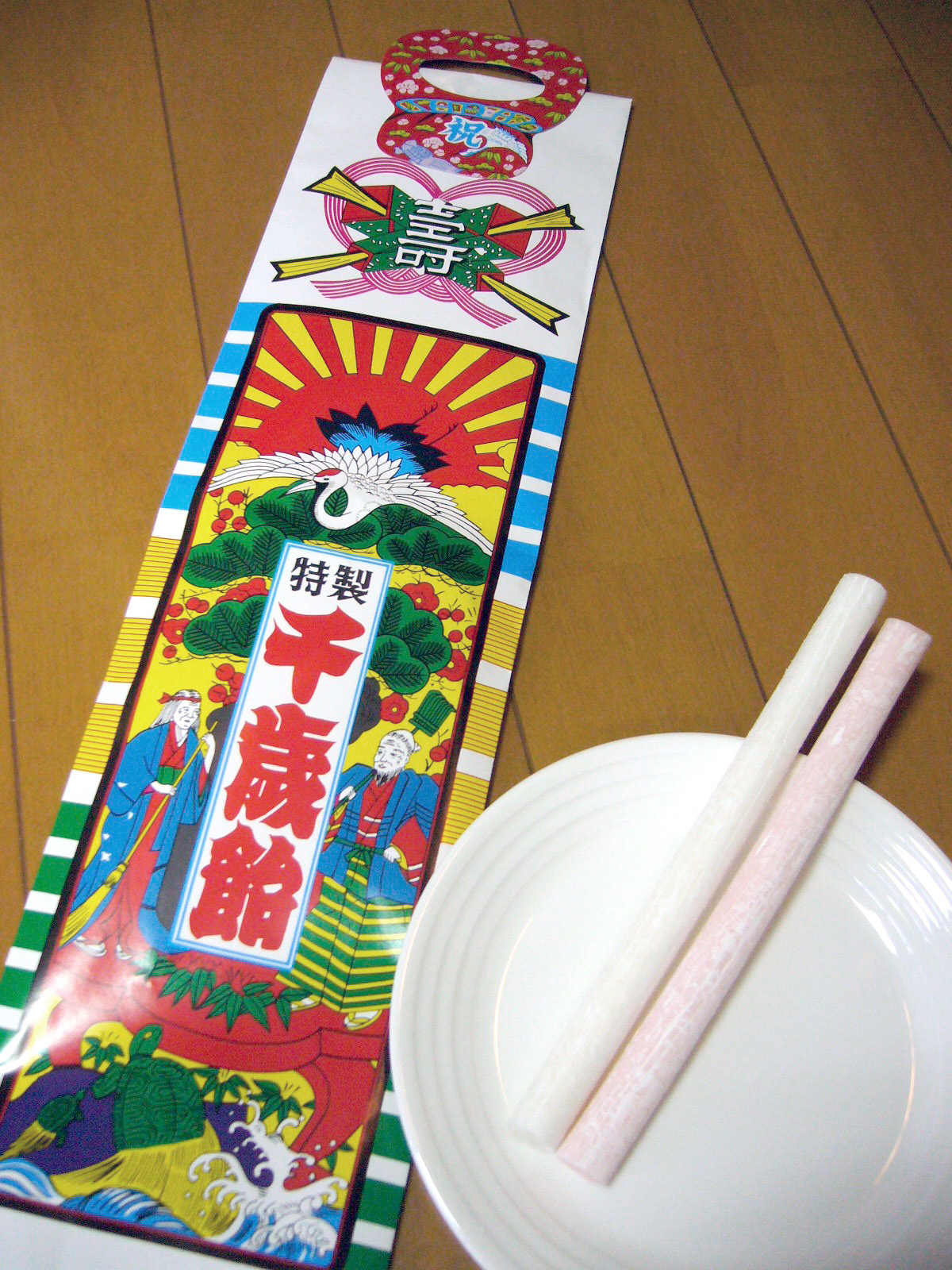
Image Courtesy of WordPress
💫 Seijin Shiki (成人式)
成人式 is a coming-of-age ceremony that is held for young people who have reached the age of 20. It is typically held on the second Monday of January and is a national holiday in Japan. Its purpose is to celebrate and recognize the passage into adulthood and to encourage young people to take on the responsibilities and duties of being an adult member of society. It is a significant milestone in Japanese culture and is celebrated by many young people and their families.
The origins of 成人式 can be traced back to ancient Japan, when young people were considered adults at the age of 20 and were eligible to vote, marry, and be drafted into military service. In modern Japan, the age of majority is still 20, and this ceremony marks the transition from adolescence to adulthood.
Once people turn 20, they have increased responsibility and must learn to act maturely. Although this day marks a crucial step into adulthood which could cause some stress, it is a day of joy and celebration.
By the time they are 20, most young women have worn a kimono many times. This celebration is yet another chance to wear a beautiful kimono. However, most kimonos are quite expensive, so many girls end up renting one. Most girls also put special decorations in their hair, though it is really up to each individual person.
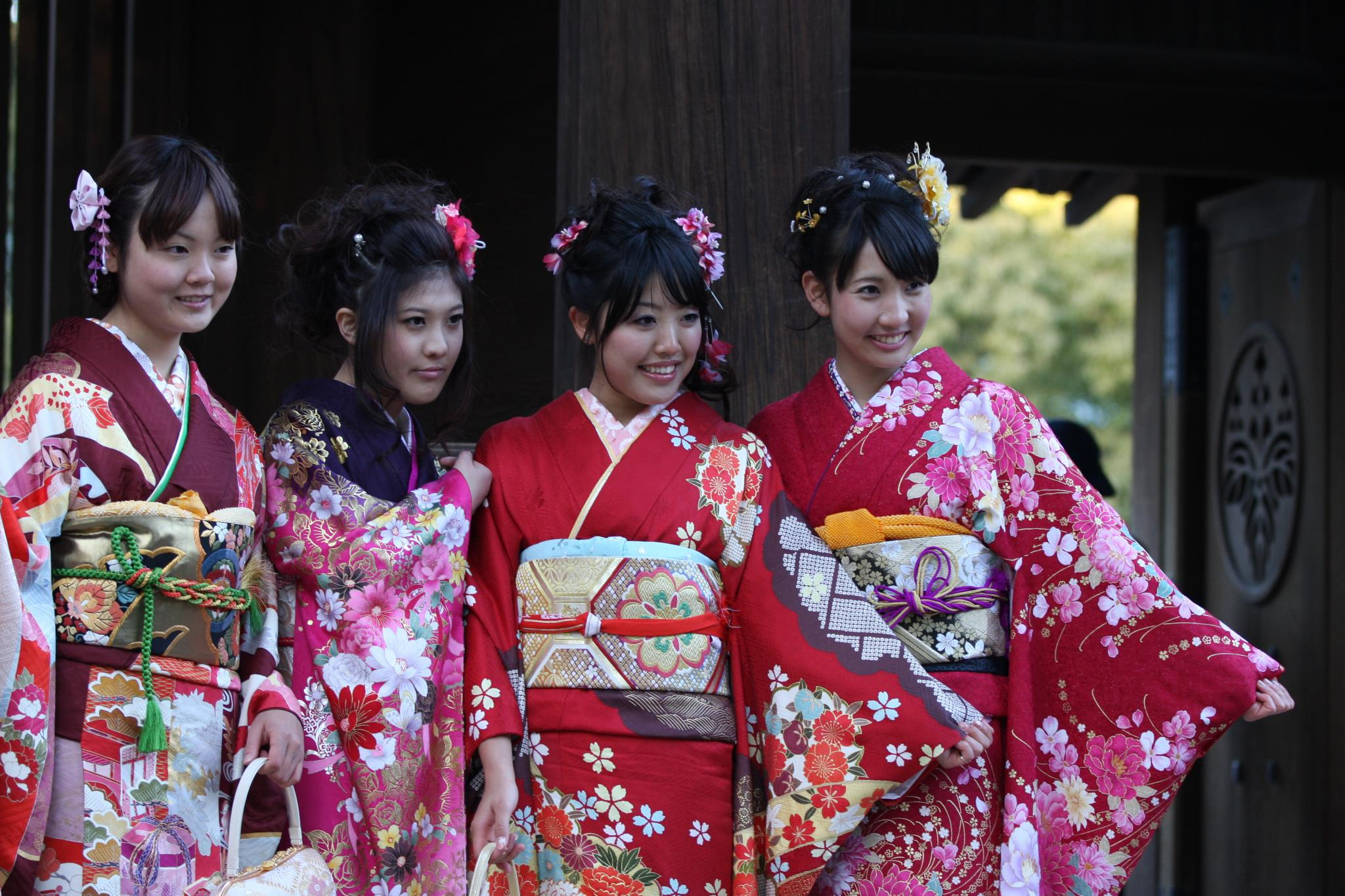
Image Courtesy of Wikipedia
Some young men wear suits while others wear a traditional piece of clothing, the hakama (はかま). The hakama is made from silk and consists of a montsuki kimono and traditional loose trousers.
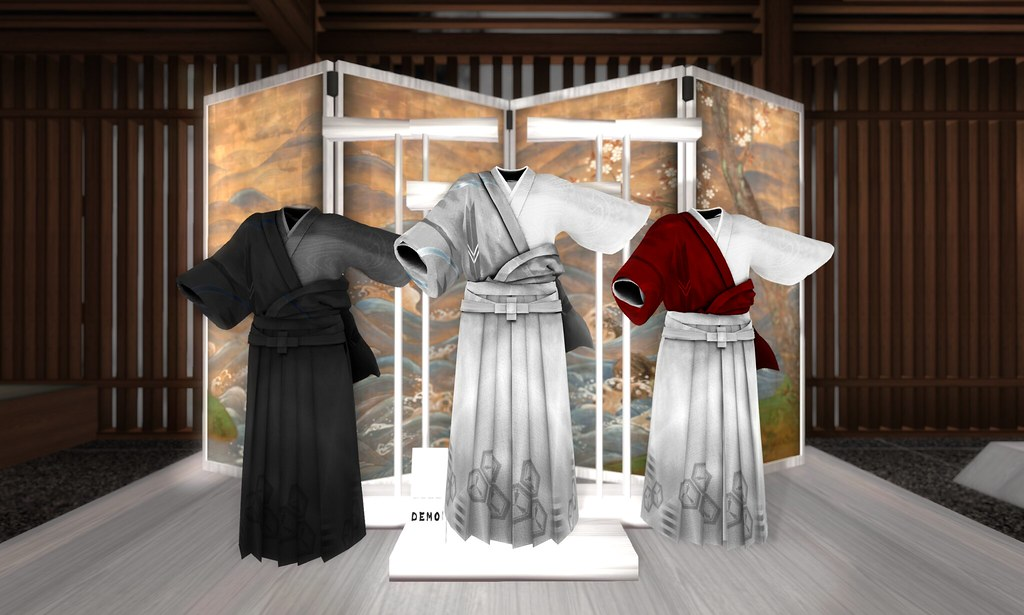
Image Courtesy of Flickr
Once they are dressed, everyone goes to their local city office where the celebration takes place. They listen to city officials give encouraging speeches and words of advice. There are usually many photographers, so everyone can get their picture taken as well. One of the most popular places for the 成人式 celebration is Shibuya*,* which is in Tokyo. This celebration spot is quite festive with many news reporters, photographers, drummers, and food vendors.
The overall atmosphere of 成人式 celebrations is vibrant and positive. The young men and women taking part are beginning a new phase of their life as legal adults, so everyone can feel the excitement in the air. It is a celebration of youthful life, and smiles are shared all around.
🔑 Key Words
- Shichi-go-san (七五三): rite of passage celebration
- Kimono (着物): traditional Japanese clothing
- Zōri (ぞうり): flat sandals worn with kimono
- Jinja (神社): shrine
- Chitose-ame (ちとせあめ): red and white candy sticks
- Seijin Shiki(成人式): celebration for people who are 20 years old
- Hakama (はかま): men's traditional clothing
- Shibuya (しぶや): major business center in Tokyo
💥 Strive for a Five Vocabulary
- Negau (願う): to pray, to wish
- Kenkō (健康): healthy
- Seichō (成長): growth, development
- Aka (赤): red
- Shiro (白): white
- Nagaiki (長生き): to live long
- Hatachi (はたち): someone who is 20 years old
- Otona (大人): adult
- Shashin (写真): picture
- Tanoshimi (楽しみ): excitement
- Takai (高い): expensive, high
- Kau (買う): to buy
Browse Study Guides By Unit
👨👩👧Unit 1 – Families in Japan
🗣Unit 2 – Language & Culture in Japan
🎨Unit 3 – Beauty & Art in Japan
🔬Unit 4 – Science & Technology in Japan
🏠Unit 5 – Quality of Life in Japan
💸Unit 6 – Challenges in Japan
✍️Exam Skills - FRQ/MCQ

Fiveable
Resources
© 2023 Fiveable Inc. All rights reserved.